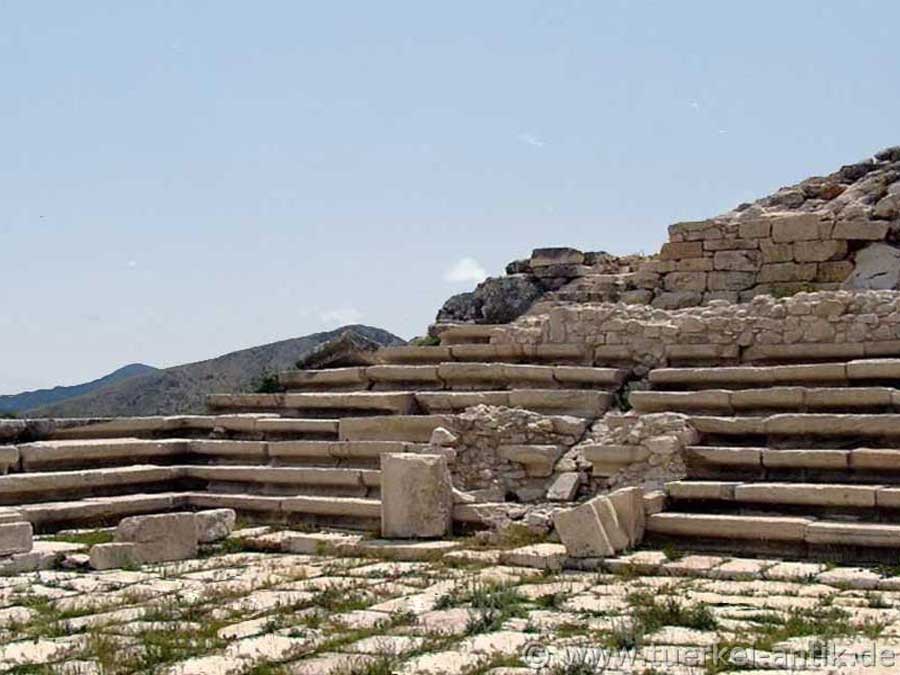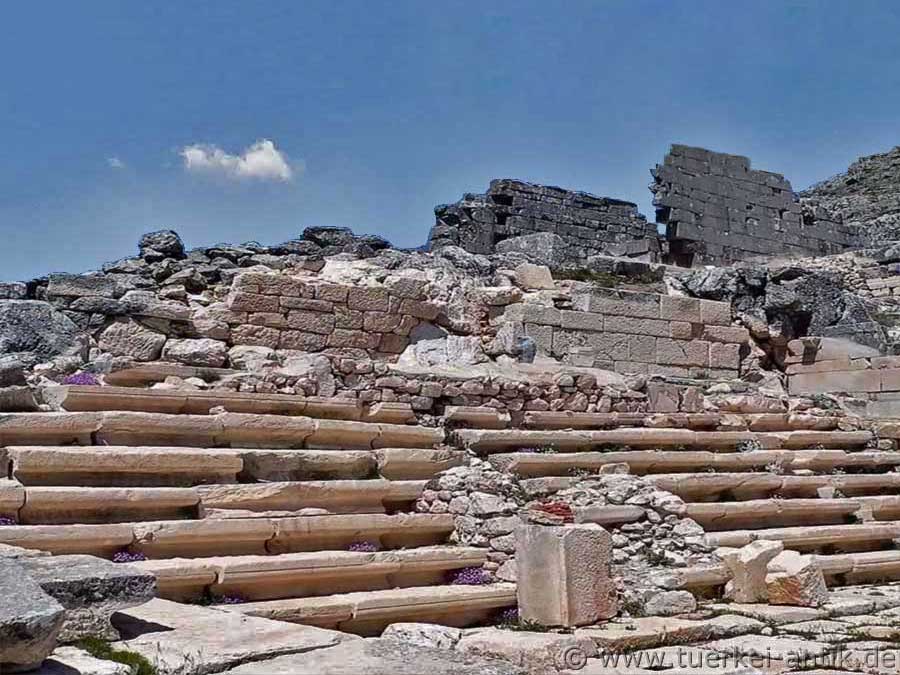 |
|
Ancient Odeons and Bouleuterions in Turkey Sagalassos |
|||
|
|
|
||
|
The Bouleuterion of Sagalassos was built at the beginning of the 1st century BC on a natural terrace west of the upper Agora. It had a strong symbolic meaning for the inhabitants of Sagalassos. It was a point of reference for many later buildings and monuments of the upper part of the city that followed its orientation. The rectangular limestone building itself was rather sober. Together with the 5 rows of seats on the south side, 8 rows on the west side and 5 rows in the east, it could accommodate 220 elected councillors. Like the Bouleuterion of Priene, it has a special feature. The cavea is not semicircular as usual, the seating steps are rectangular to each other. A frieze on the outside of the monument showed weapons; on the front the busts of the god Ares and the goddess Athena were worked into the frieze. Inside the building, following a new and fashionable style in Pisidia at that time, semi-capitals in Corinthian style were used. |
|||
|
|
|||
 |
|||
 |
|||
| Photos: @chim | |||
| Translation aid: www.DeepL.com/Translator | |||
| Source: multiple | |||
|
|
|||

